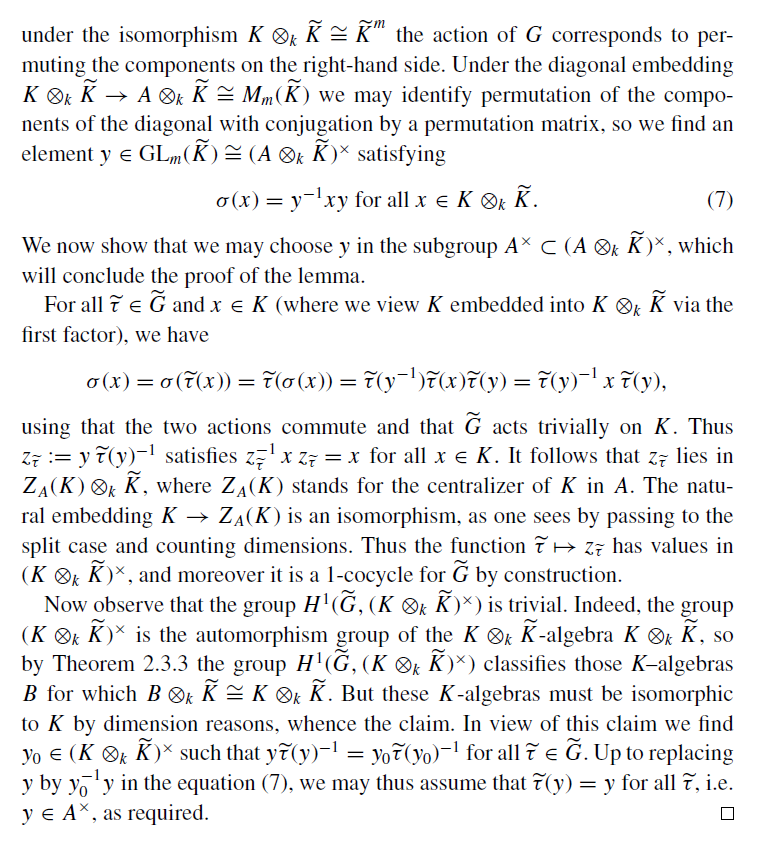I'm currently reading the book "Central Simple Algebras and Galois Cohomology" written by Philippe Gille and Tamas Szamuely.
In the book, I don't understand a computational proof of the theorem that a central simple algebra $A$ over a field $k$ of degree $m$ containing a cyclic extension $K/k$ of degree $m$ is a cyclic algebra, in the page 38~39.
In particular, I want to understand fully the Lemma 2.5.4. But I have a difficulty in understanding the line "Under the diagonal embedding ..."
Is the diagonal embedding the same as the algebra homomorphism induced(by taking tensor product) from the inclusion map of $K$ into $A$.
If not, is it necessarily an algebra homomorphism?
I hope someone can elaborate the argument of the book. Thank you.


